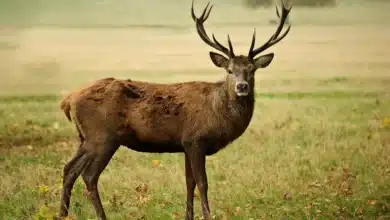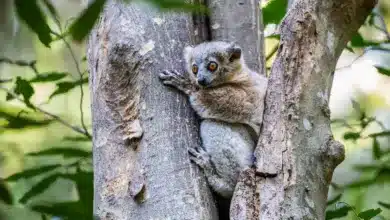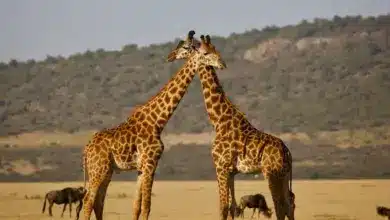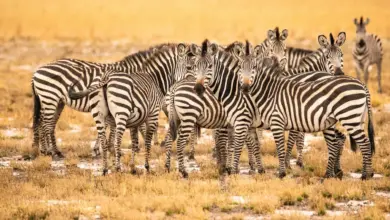A ‘Petite’ Giraffe Would Be a 150-Pound Baby. But There’s Plenty Remarkable About Giraffes—Including That The Males Are Bisexual.
Is there such a creature as a “petite” giraffe? If by “petite” you don’t mean a 6-foot-tall (1.8 meter), 150-pound (68-kilogram) newborn baby giraffe, the answer is . . . No!
Recently, a lot of people in various online communities have been having fun with the concept of petite giraffes, AKA petite lap giraffes, a reference to the supposed ability of these diminutive (and nonexistent) creatures to sit and fit comfortably in a human lap, just like a cat or a pekinese. Most people seem to know it’s all a good-natured hoax, but a few are more credulous.
[ez-toc]
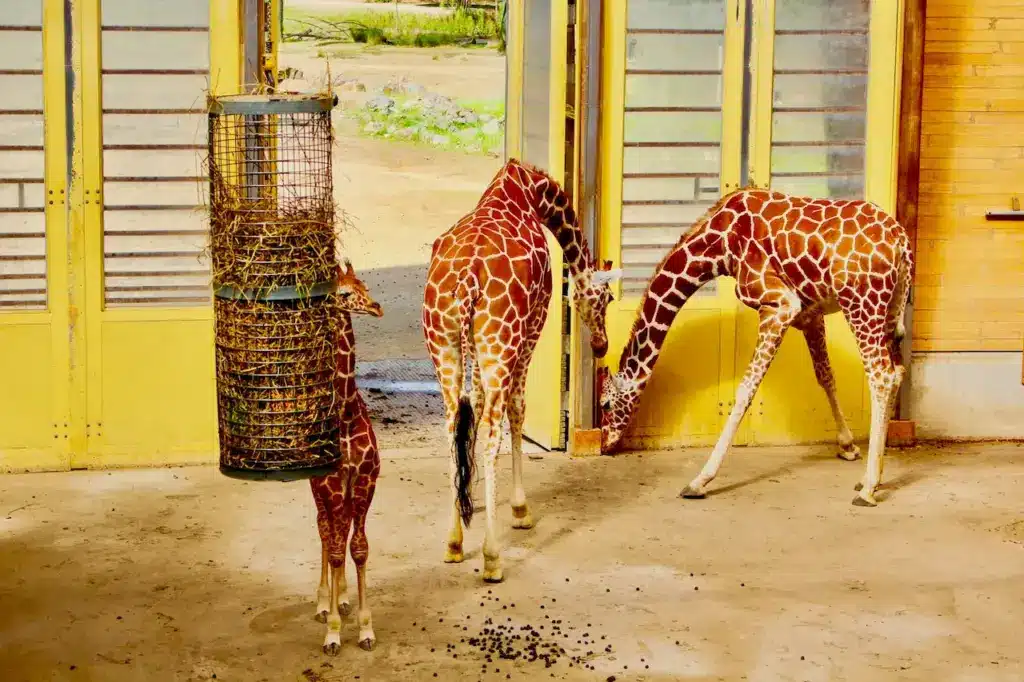
In fact, a full-grown giraffe belonging to any of the 9 recognized subspecies attains a height of from 14 to 18 feet (4.3 to 5.5 meters), and a weight of between 1,500 and 3,000 pounds (680 to 1,360 kilograms), so if one ever sat in your lap, you’d be history. Nor could even the most talented of mad scientists either breed or somehow stunt a giraffe so that it was petite enough to snuggle in a human lap, as such a feat would require a size reduction of well over 95 percent. A full-grown human shrunken by an equal proportion would be the size of a fairy, and we all know fairies don’t exist—don’t we?
Then there’s the question of why anybody would want to do such a thing in the first place. . . .
In any case, the world doesn’t need petite lap giraffes; there is enough already that is strange and remarkable about these animals. For one thing, giraffes are, as you probably know, the tallest land animal on the planet. About half their height is in that incredible neck, which is comprised of 7 vertebrae (just like the human neck), each of which can be over 10 inches (25.4 centimeters) long (unlike the human neck). A grown giraffe’s neck weighs over 600 pounds (272 kilograms), stretches to 7 or more feet (2 meters) in length, and the jugular veins that run the length of it are equipped with special valves that prevent too much blood from rushing into or out of the giraffe’s brain when it lifts its head or bends down to get a drink.
One possibility for the evolution of the giraffe’s “petite” neck is so that the creature can eat tree leaves that shorter animals are unable to reach. But some scientists think the neck came about primarily as a prominent instrument for courting and fighting.
The long neck, of course, presents an interesting challenge to the giraffe’s circulatory system, which must somehow send blood all the way up to reach the animal’s brain. The giraffe meets this challenge with a heart that is anything but petite, at 2 feet (.6 meters) in length, and weighing as much as 25 pounds (11 kilograms). The giraffe’s “petite” lungs, for their part, hold up to 12 gallons (55 liters) of air.
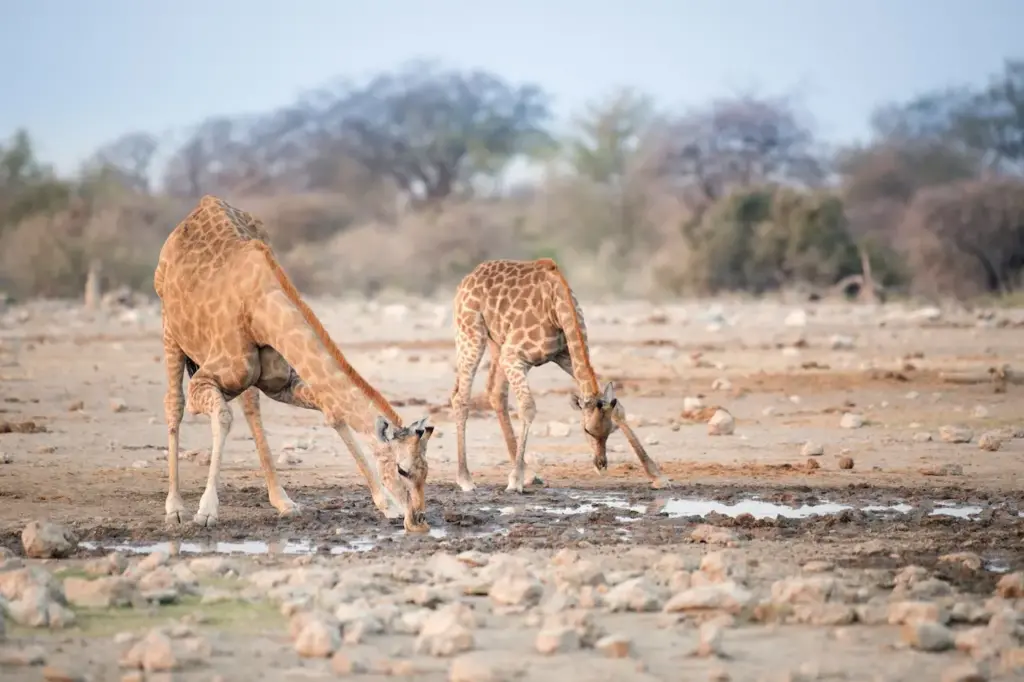
We also alluded to the giraffe’s sexuality. While many type of animals, particularly mammals, often exhibit homosexual behavior—it’s very natural in the natural world—homosexuality among male giraffes may be more common than in any other mammal species. According to field researchers, most sexual activity among giraffes involves males “mating” with other males. Nor does this sort of sexual behavior seem strictly related to a show of dominance, as it often is in other species; in fact, it is preceded by an elaborate courtship ritual known as “necking,” in which two animals spend a lot of time rubbing necks with one another.
When it comes time for actual breeding with receptive female giraffes, only the largest and strongest bull giraffes get to participate—the smaller and younger males get chased off by a bigger male, or refused by the female. Therefore, it seems likely that the sex life of many male giraffes consists entirely of a series brief homosexual encounters—and absolutely no heterosexual experiences.
Does all this mean that a majority of male giraffes are actually gay? We suppose that would depend on what the animals themselves would truly prefer, if given a choice—and no one’s figured out how to ask them yet.
